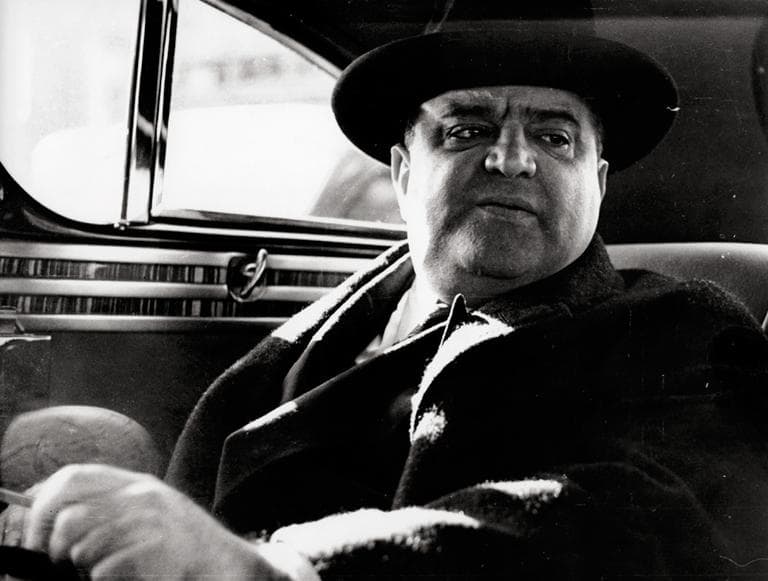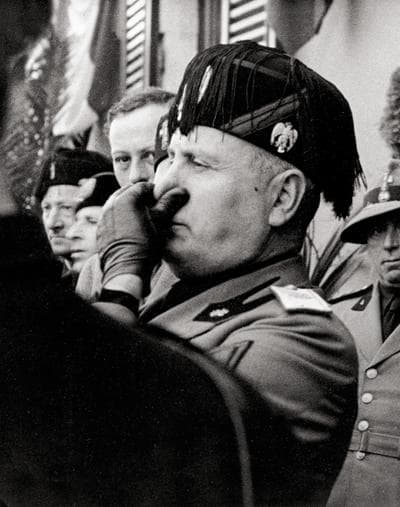Advertisement
Pioneering Photojournalist Aigner Humanized WWII-Era Figures
Resume
Without television, the Internet or CNN, the world's view of conflict was quite different in the 1930s during the run-up to World War II. Lucien Aigner, a journalist and photographer, was determined not to leave the world in the dark as Europe plunged into the abyss of war.
A trailblazing figure, Aigner wrote articles to accompany his photographs.
“That was pretty much unheard of, that was two separate species in a way," said Jennifer Uhrhane, the guest curator of an exhibition of Aigner's photographs at the deCordova Museum and Sculpture Park in Lincoln. "With Aigner doing both of these functions at the same time, you really get a much better idea of the whole story behind the pictures, and his observations as he was taking the pictures.”
As he traveled from New York to Rome, Aigner's lens — and his pen — captured iconic images of Italian dictator Benito Mussolini, actress Marlene Dietrich, Ethiopian Emperor Haile Selassie and New York Mayor Fiorello LaGuardia, among many others.
“He managed to get access into places where normally journalists – photojournalists – usually were not able to get into and so he was able to access people who were typically inaccessible,” Uhrhane said.

Aigner's portraits humanized larger-than-life figures. His 1935 portrait of Mussolini became the cover of Newsweek and showed the specter of facsism in a completely new way.
Dressed in his customary full military regalia, Mussolini cut a bellicose and imposing figure. In Aigner's portait, however, Mussolini is captured pinching his nose to stifle a sneeze — a rare moment of humanity and weakness.
"I think he kind of enjoyed, in a way, finding these moments where he was getting people unaware of the camera and caught not quite at their best moment to reveal, maybe, what they’re really like behind the so-called ‘mask,’ ” Uhrhane said.
Aigner's portraits also captured ordinary citizens coping with a world growing more dangerous by the day. In the photo-story "Paris Protects its Inhabitants Against Gas Attacks," Aigner showed the world a city living in fear.
Anne-Marie Aigner, the artist's daughter, believes that her father's greatest achievement lies in his ability to make his audience empathize with his subjects.
"All of a sudden you’re not only looking at an interesting photo — wonderful photos — but you’re learning a fascinating glimpse of that moment and the personality behind it,” Anne-Marie Aigner said.
The exhibit, "Lucien Aigner: Photo/Story," draws largely on material Anne-Marie Aigner and her family preserved.
Guests:
- Anne-Marie Aigner, daughter of the artist
- Jennifer Uhrhane, guest curator
More:
- Lucien Aigner: Photo/Story at the deCordova Sculpture Park and Museum
- Documentary: "Lucien Aigner: A Life with a Camera"
Selections from "Lucien Aigner: A Life with a Camera"
This segment aired on March 7, 2011.